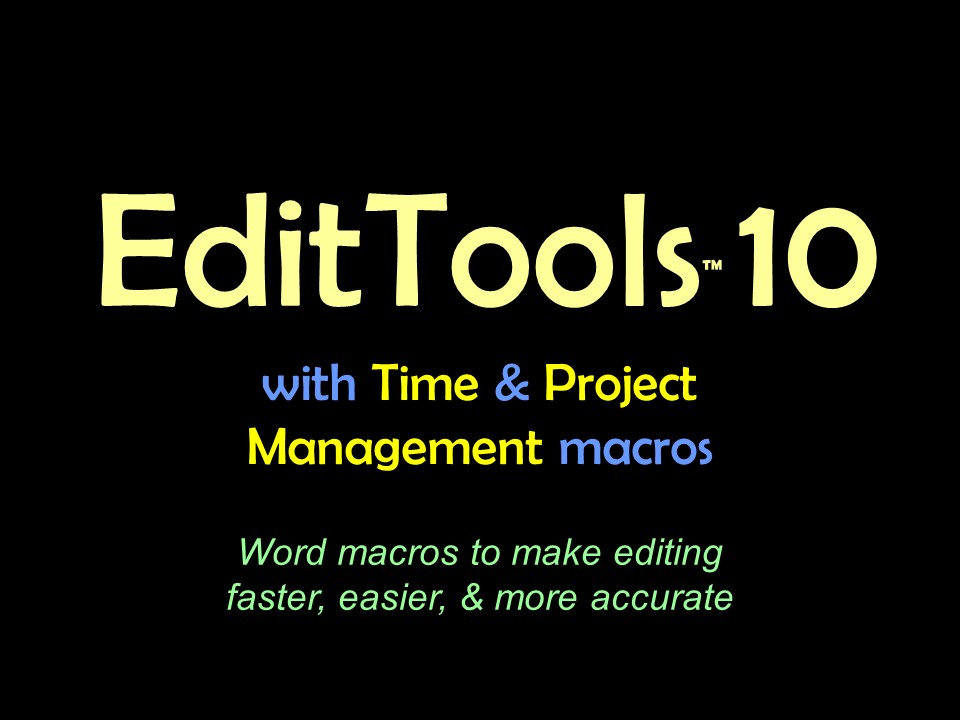Time Tracker
As independent business persons, professional editors need to track data for myriad reasons, including:
Time is one of the most fundamental bits of data that editors track. How much time an editor spent on a project is important for multiple reasons, including determining the editor's Effective Hourly Rate (EHR) and the average number of pages the editor edits per editing hour (APH). (For more information on EHR, see the five-part series "What to Charge?" at An American Editor.) When asked to take on a project, an editor is often asked to quote a price or estimate the number of hours the editing will take, making the data collected by Time Tracker invaluable In addition to tracking time, a common need is to regularly save one's work. Word's built-in autosave creates a temporary recovery file in case of a crash or some other Word- or computer-related problem, but it does not actually save the document. Time Tracker includes a timed autosave option that lets you save both your time data and your open Word document(s). Because of its complexity and the variety of project management tasks that Time Tracker performs, its help file — at more than 50 pages — is too large to be easily used online. Consequently, the complete, searchable Time Tracker help file can be downloaded here in PDF format, which can be read with a PDF reader like Adobe Acrobat Reader.
|
Read More
Purchase a license to use EditTools by clicking the link below |
